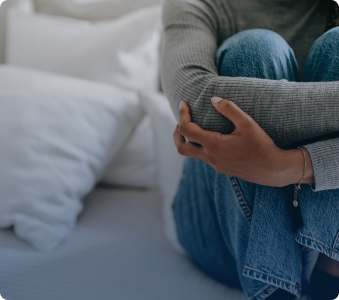Mar 7, 2013
 (left to right): Tim Murphy, R-Pa., Diana DeGette, D-Co., Pete Earley and Michael Fitzpatrick meet to discuss mental health issues raised by the Newtown tragedy with others on March 5, 2013. (Photo: EnergyandCommerce – Flickr)
(left to right): Tim Murphy, R-Pa., Diana DeGette, D-Co., Pete Earley and Michael Fitzpatrick meet to discuss mental health issues raised by the Newtown tragedy with others on March 5, 2013. (Photo: EnergyandCommerce – Flickr)“Dad, how would you feel if someone you loved killed himself?”
That was what Pete Earley recalled his then college aged son Mike asking him as they raced in their car from New York to Virginia. The previous year Mike had been diagnosed with bipolar disorder but had stopped taking his medication. As part of a bipartisan group of Congress members, Earley described his experience with his son’s mental illness.
For five days, Earley’s son had been wandering the streets, convinced that he was on a special mission from God. On the ride down to Virginia, he would quickly switch from bursts of laughter to uncontrollable sobs.
After arriving at the hospital and after four hours of waiting, his son had had enough and said he was going to leave and that he did not need help. Earley quickly ran outside and grabbed a doctor, begging him to do something. But the doctor did nothing; he could do nothing.
At that time, Virginia law prohibited a person from being forced into treatment unless he or she posed an imminent danger to him or herself or someone else.
Bring your son back after he tries to kill you or tries to kill someone else, he remembered the doctors telling him.
His only possibility to have his son receive treatment was to lie. After 48 hours of watching his son slip into a greater state of psychosis, he finally did. “I lied, I told that doctor my son had threated to kill me and that was good enough to get him taken into the hospital,” Earley said.
The story, however, does not end as simply as that of course. Insurance problems, legal troubles, run-ins with police, psychotic relapses and other difficulties soon followed.
But today his son is doing better. After nine years he has received a treatment that works and now has a job, lives on his own and pays taxes; huge steps that at one time seemed insurmountable. (Earley describes his experience navigating the mental health system in his book Crazy: A Father’s Search America’s Mental Health Madness.)
As Earley noted, his son’s experience was not an isolated event. There are thousands of other cases around the country baring remarkable resemblances. And not all end as positively. Two other parents shared their personal experiences of having children with mental illness at the hearing. Pat Milam described his inability to get his son help and his suicide a mere eight days after being discharged from a psychiatric ward. Liza Long, author of the blog “I am Adam Lanza’s Mother,” published right after the Newtown shooting, that went viral, and mother of a 13-year-old with mental illness who has at times exhibited violence, relayed the fear that a parent has with dealing with a child who has a mental illness.
“We live in fear of the future,” Liza Long said. “What will happen when my son turns 18? Will my son harm himself or others? How will I pay for all the services I need to keep my child functioning?”
The stories of these parents helped frame the discussion for the other members attending the hearing hosted by the oversight subcommittee of the House of Energy and Commerce Committee and headed by Chairman Tim Murphy, R-Pa., and ranking member Diana DeGette, D- Co., this Tuesday. The hearing, titled After Newtown: A National Conversation on Violence and Severe Mental Illness, examined the nature of severe mental illness, violence and the availability of federal mental health resources and programs.
Many of the invited panelists pointed to the lack of accessible treatment and commitment laws as to reasons why the mental health system is in its current state and unable to provide adequate care.
“The typical delay between an initial episode of psychosis and start of medical treatment is 100 weeks,” said DeGette.
Part of the reason for this delay, as noted by Harold Koplewicz, M.D., president of the Child Mind Institute, is the lack of available psychiatrists. According to Koplewicz, there are an estimated 15 million Americans under the age of 24 who lives with a mental illness, but there are only approximately 7,500 certified child psychiatrists. Nearly 75 percent of all mental illnesses begin before the age of 24.
While treatments are not perfect, they do work; the problem is getting people into appropriate treatment and at an early stage in their illness. Currently the criminal justice system often serves as a primary form of treatment.
“It’s just not the way to manage any serious medical problem,” said Thomas Insel, M.D., director of the National Institute of Mental Health. “But we do not have at this point a system that’s there to address the need.”
Resources like community centers, hospital beds and therapy are simply not available in many communities.
Michael Fitzpatrick, executive director of the National Alliance on Mental Illness, agreed. “There is no single, coordinated system in this country today. NAMI did a grading the states report in 2009 and what we found was tremendous variability from county to county as you moved across the country.”
Improving funding to those resources appears to be paramount in reducing violence and improving mental health in the country. However, responding to that request will be more difficult than simply discussing the issue.
“I want to make sure we don’t do some knee-jerk reactions and think because we did something, we did the right thing,” Tim Murphy said in his closing remarks. “The worst thing we can do is lull ourselves into some state of sleep, and say ‘Well, we took care of mental illness so we’re done for the next decade.’”

